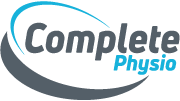What is a Cervicogenic Headache?
A cervicogenic headache is a pain that is felt in the head but that is referred from a problem in the neck. It is known as a secondary headache, because it is a type of headache that results from another medical condition. The pain is commonly described as a steady ache or dull pain and is often felt in the base of the skull. The symptoms of a neck headache can be confused with other types of headaches such as tension headaches or migraines; however the main difference between these and a neck headache, is that Physiotherapy treatment on the neck can change or relieve symptoms of neck headaches almost immediately.
Anatomy of the Cervical Spine (Neck)
The neck is incredibly complex; it consists of 7 cervical vertebrae (C1-C7), C1 is closest to the skull, while C7 is at the base of the neck.

Each vertebra in your spine has an upper and a lower pair of facet joints; these joints link the back of the spine together and enable movement. They also make the spine more stable due to the interlocking mechanism of the facet joints and adjacent vertebrae.
The cervical spinal nerves exit the spine just above the facet joint at each level, and provide sensory and motor control to the upper parts of the body.
In between each vertebrae are fibrous, shock-absorbing pads called the intervertebral discs. These discs act as shock absorbers and reduce the impact going through the neck.

Your cervical spine also houses the upper portion of the spinal cord through the spinal canal, as well as having an elaborate system of nerves, over 30 muscles, and numerous ligaments and tendons. This means that there are a lot of parts that can be damaged.
What Causes a Cervicogenic Headache?
A cervicogenic headache is thought to be referred pain arising from inflammation or irritation of the upper spinal nerves C1–C3. Any structure innervated by the C1–C3 spinal nerves could be the source for a cervicogenic headache; this may include the joints, discs, ligaments, and/or musculature. The most common source of CGH are problems affecting the cervical facet joints , especially those of C2/C3. These types of headaches are quite rare, however are most likely to be seen in patients with a whiplash injury. Other, less common cervical conditions that can cause CGH include:
- Arthritis of the upper spine (Spondylosis)
- Degenerative disc disease
- Cervical fractures
- Rheumatoid Arthritis
- Infections
- Tumours
What are the Symptoms of Neck Headache?
Typical symptoms of a CGH include a headache which is accompanied by neck pain, stiffness, and limited movement. In a lot of cases headaches develop from the base of the skull and radiate forwards over one side of the head. Certain neck movements can often provoke or alleviate symptoms.
Some other symptoms of a cervicogenic headache include:
- Applying pressure over the upper neck or base of the skull can relieve symptoms
- One sided neck, shoulder or arm pain
- Pain around the eyes
- Sensitivity to light or noise
- Blurred Vision
- Nausea
Diagnosis by a specialist spinal physiotherapist is crucial for early and effective treatment. If you have any of the above symptoms then get in touch with us today to book an appointment.
Very occasionally CGH may be caused by more serious underlying conditions such as haemorrhage or fracture in the head or neck region. In such cases, one or more of the following symptoms may be present:
- Sudden onset of severe, constant headache that is intolerable
- Nausea and vomiting
- Confusion and disorientation
- Loss on consciousness
- Problems with speech or swallowing
- Numbness in the arms
- Loss of arm function
If you experience any of the above, then you must seek immediate medical attention via A&E or by calling 999.
How do we Diagnose a Neck Headache?
There can be a number of possible causes for your headache, therefore getting an accurate diagnosis is crucial for the proper treatment and management of your condition.
CGHs are very treatable; the sooner you can get a diagnosis the better, therefore don’t delay in seeking professional help from an experienced Physiotherapist.
At Complete, one of our specialist spinal physiotherapists will be able to diagnose your problem from your initial consultation and assessment.
They will perform a comprehensive evaluation of your symptoms, ask questions about your medical history, and physical examination to determine the underlying cause of your headache.
Physical Examination
Your neck is very complex with lots of different structures and moving parts, therefore your Physio will need to spend time doing a thorough physical assessment, in order to figure out exactly what area is being affected and the likely underlying cause.
Your physical examination will include:
- Assessing range and quality of movement in your neck, upper back and shoulders.
- Gently palpating the areas affected in your neck and head, to feel for pain and tenderness.
- Reviewing your spinal posture and checking for any spinal deformity.
- Assessing for muscle spasm or tightness.
- Neurological/Nerve assessment – Testing your reflexes, strength and sensation in your upper limbs.
- Looking at other areas of your spine and peripheral joints that might also be causing or contributing to your symptoms.
- Observe specific movements and actions to assess any movement impairments or functional limitations.
- Performing the Cervical Flexion-Rotation test which helps determine whether your CGH is due to upper cervical dysfunction.
Will I Need a Scan or Other Tests?

While imaging tests are not specific to diagnosing a neck headache, they can identify structures potentially causing the underlying neck problem. If your physiotherapist feels you would benefit from further investigations they can refer you to have additional tests or scans. These might include X-Rays, MRI or CT scans, or sometimes blood tests.
It is important to note that some people may have neck headaches without any significant findings on imaging, while others may have abnormalities on these tests without experiencing neck headaches, therefore it is vital that your treatment is based on your specific clinical presentation and symptoms.
How are Neck Headaches Treated?
Specialist neck physiotherapy should be the first line of treatment for CGH; early treatment can have speedy and effective results in relieving your symptoms.
After your assessment, your Physiotherapist will have a clear understanding of the underlying cause of your secondary neck headaches, and will be able to start you on the most appropriate treatment.
There is no specific treatment protocol for cervicogenic headache (CGH), and a combination of different techniques may be needed to alleviate your pain. Your physiotherapist at Complete will provide you with a tailored regime based on your symptoms and personal goals.
Depending on the severity and the specific underlying causes of your neck headaches, many patients will experience a reduced headache after your initial treatment.
Your neck headache treatment may include all or some of the following techniques:
Joint Mobilisations
Stiff neck joints may need to be loosened or unlocked via gentle gliding techniques, joint traction or, in specific cases, gentle and localised joint manipulation techniques.
Soft Tissue Work
Tight or overactive muscles may require muscle stretching, massage, acupuncture, dry needling or trigger point release. Heat and Ice can be also used to relieve muscle pain/tightness.
Strengthening Exercises
Weak muscles need to be strengthened in order to create stability in the neck and help control normal joint movement. These may include exercises for your deep neck muscles and/or other postural muscles in your shoulders and back.
Posture Correction
Your physiotherapist will assess your spinal posture and correct any abnormalities or movement dysfunction. If your symptoms are exacerbated with computer work, they will also assess your desk set up, and carry out a full ergonomic assessment if required.
Pilates
Your physiotherapist may also suggest that you commence a course of Pilates, which is a highly effective way of managing cervical spine related conditions in the long term, and preventing recurrence of symptoms. It can vastly improve your spinal movement and posture. Complete Pilates is a specialist team who offers a variety of 1:1 and group classes.
Medication
As well as Physiotherapy intervention, medication can also be used to help control your headaches. The most common kinds of medications prescribed include painkillers, nonsteroidal anti-inflammatory drugs, and muscle relaxers. You should always seek medical advice before taking any medication.
At Complete Physio we are experts in the treatment and management of Cervicogenic Headaches and Neck Pain; we are dedicated to getting our patients symptom free and back to full function.
We have clinics across London, and can often offer urgent, same day appointments if required.
What If Neck Physiotherapy Doesn’t Help My Headache?
Your therapist will continually reassess your symptoms and clinical presentation; if your headache persists despite extensive neck physiotherapy, your therapist will evaluate your progress and determine if a different approach might be necessary. One option might be to have a Cervical Spinal Injection.
While we do not offer spinal injections at Complete Physio, we work with a number of exceptionally skilled consultant spinal and pain medicine specialists who will be able to carry out these treatments.
There are two common types of injections used for cervical spine related conditions:
Cervical Facet Joint Injections
Facet joint injections usually have two goals; to help with confirming a diagnosis, and also to provide longer term pain relief.

If by placing anaesthetic into the facet joint to numb the pain, there is immediate relief of pain and headache, it will help determine if the facet joint is a source of pain.
Along with the numbing medication, a steroid (cortisone) is also injected into the facet joint to reduce inflammation, which can sometimes provide longer-term pain relief.
Cervical Epidural Steroid Injection.
A cervical epidural steroid injection is a minimally invasive procedure that involves injecting a combination of numbing medication (anaesthetic) and corticosteroid into the epidural space around the spinal nerves. Corticosteroid is a strong and effective anti-inflammatory agent; by injecting this near a pinched or inflamed cervical nerve it can reduce swelling and relieve symptoms of neck pain and CGH.
Injections should not be used as a stand alone, or first line treatment. Once your pain has settled from the injection (approx 1 week), you should re commence your rehabilitation under the guidance of your Physiotherapist at Complete.
The pain relief can last from a few weeks to years and if you experience a recurrence of pain, the procedure can be repeated.
Surgery For Neck Headaches
Surgery is usually only required if there is a serious underlying neck pathology, and/or your symptoms are not relieved by any other conservative treatment. The type of procedure will be determined by what the primary cause of your neck problem and CGH is.
At Complete Physio we have long standing relationships with some of the most senior and experienced Spinal Surgeons in the country, and so if a surgical opinion is required, then we will make sure that you are given the best possible care.
Don’t let pain hold you back, book now!






